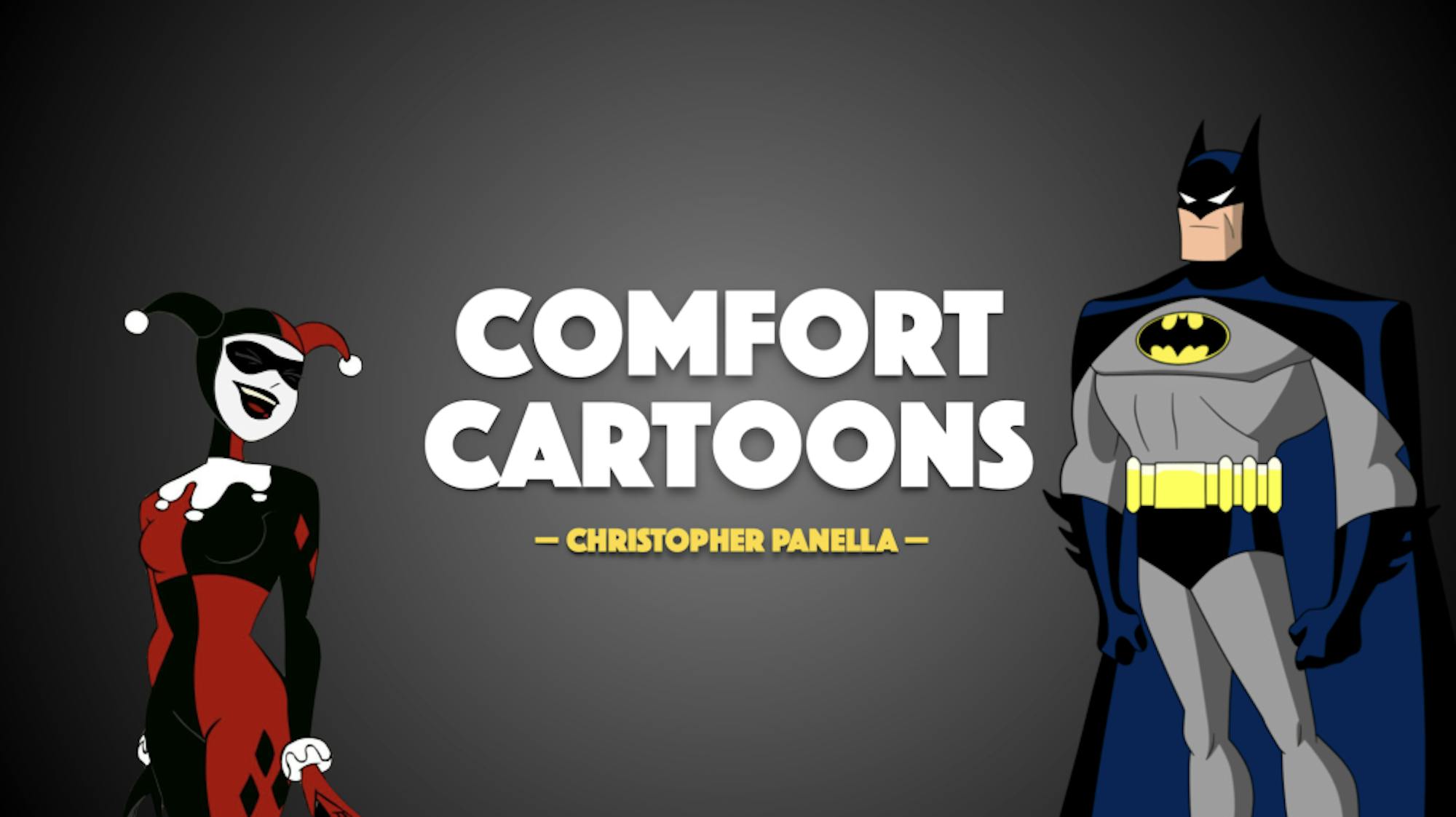In this installation of “Comfort Cartoons,” I’m focusing on “Batman: The Animated Series” (1992–1995), the iconic neo-noir crime television show that began the DC Animated Universe (DCAU).
Following the episodic adventures of Batman,Robin and Batgirl, the series takes on a darker tone that feels inspired by both Tim Burton’s two Batman films and the ‘70s and '80s comic books. Those interpretations are seen in every detail: Gotham City’s skies are dark even during the day, the buildings are tall and gothic and gangsters sneak around in alleys and side streets.
All of this feels timeless in Batman’s world, which is always meant to be brooding and gloomy. But “Batman: The Animated Series” plays with what makes the Caped Crusader classic. While it embraces his realism and complexity — which becomes even clearer when compared with the DCAU’s later endeavors, like “Superman: The Animated Series” (1996–2000) and “Justice League” (2001–4) — it establishes “Dark Deco” visuals and designs that make Batman more of a ‘40s noir detective than a superhero.
But just because the show fronts a more serious and stylistic approach doesn’t mean it lacks absurdity. The Joker’s just as insane and funny as ever (thanks to Mark Hamill’s impeccable voice acting) and Poison Ivy’s plots, involving stealing plants and turning Gotham’s elites into trees, are wacky.
These are characters that feel ripped out of comic book pages, colorful costumes and all, but set in a new environment. And it’s not just Batman’s typical rogues — most episodes explore new villains, giving time to overlooked characters like the Ventriloquist, Scarface, Maxie Zeus, Count Vertigo and the Clock King.
“Batman: The Animated Series” manages to maintain all of that faithfulness to its source material while having a complex and fresh take. That combination made it my favorite television show as a child; it maintains that status years later, with each re-watch revealing exciting new details and richness. And I think a major part of my love for the show is its dedication to interesting storytelling and developing relatable villains.
Rather than making a morally black-and-white children’s show, with good cops and bad villains, creators Eric Radomski and Bruce Timm chose to emphasize these characters’ complexities. The Clock King’s desire for revenge is understandable, Baby Doll’s story is tragic, Detective Harvey Bullock is frustrating even when he’s right and Mr. Freeze’s redemption is particularly notable.
The same applies to Batman. “Batman: The Animated Series” makes an effort to note the similarities between Batman and his villains. In episodes like “Fire From Olympus,”Maxie Zeus’ fantastical delusion that he’s the Greek god Zeus is compared with Batman’s seemingly separate identities of Bruce Wayne and Batman. Two-Face and Catwoman receive similar treatment. In every instance, the writers treat Batman as both a human and a larger-than-life figure, someone who can empathize with his villains' struggles.
This is all to say that “Batman: The Animated Series” stands as a monumental story in the larger DC Universe. Not only does it draw from previous works, but it also broke ground as one of Batman’s most mature and exciting iterations.
"Batman: The Animated Series" is streaming on HBO Max.






